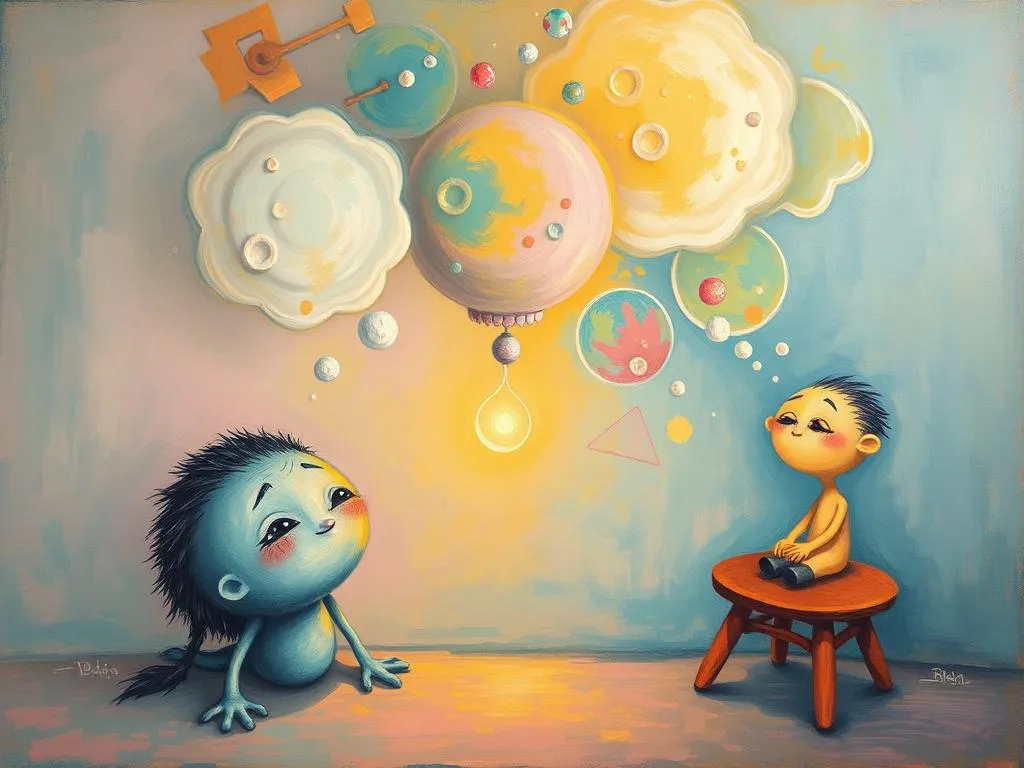
Introduction
Dreams have long been a source of fascination and intrigue, serving as a window into our subconscious mind. Among the myriad themes that populate our nightly visions, anxiety-related dreams stand out for their intensity and emotional weight. These dreams often reflect our waking fears, worries, and stresses, making them particularly relevant in today’s fast-paced world. As we navigate various life challenges—be it work, relationships, or personal ambitions—our dreams provide a unique medium through which we can explore and confront our anxieties. Understanding these dreams can offer valuable insights into our mental states and help us find a path toward healing and clarity.
Symbolism and Meaning
When delving into anxiety-related dreams, it’s essential to recognize the common symbols that often appear. One prevalent symbol is that of being chased. This scenario frequently embodies the feeling of escaping from overwhelming stressors or fears. The pursuer might represent a specific anxiety—such as a looming deadline or an unresolved conflict—or it could symbolize a more abstract fear, like the fear of failure or rejection.
Another significant symbol is falling, which is often linked to feelings of loss of control or insecurity. Falling can evoke a sense of helplessness, reflecting situations in waking life where one feels overwhelmed or unsupported.
Additionally, exams or tests are common motifs in anxiety dreams. They often symbolize self-evaluation and the pressure to perform, whether in academic settings or personal endeavors. The fear of failure in these scenarios may mirror real-life situations where we feel judged or scrutinized.
The setting of the dream also plays a crucial role in the interpretation. For instance, a claustrophobic environment—such as being trapped in a small space—can signify feelings of being cornered by responsibilities or expectations that feel overwhelming. Conversely, a public space, where one feels exposed, may represent social anxieties or the fear of being judged by others.
From a psychological perspective, these symbols can be interpreted as reflections of our inner turmoil. Carl Jung proposed that dreams serve as a means for the unconscious to communicate with the conscious mind, often through symbols that reveal deeper truths about ourselves. In this light, anxiety-related dreams can be seen as a call to confront unresolved issues that we might be avoiding in our waking lives.
Key Scenarios and Variations
Anxiety-related dreams can manifest in numerous scenarios, each carrying its own unique nuances. For instance, a dream of being unprepared for a presentation can evoke feelings of inadequacy and fear of exposure. In this context, the dreamer’s anxiety may stem from a specific situation at work or school, but it also can reflect broader fears about competence and self-worth. This variation emphasizes the importance of preparation and self-acceptance in mitigating anxiety.
Another common scenario involves losing something valuable, such as keys, a wallet, or even a loved one. This loss often symbolizes feelings of insecurity or fear of losing control over one’s life. It prompts a reflection on what we value most and how our anxieties can cloud our ability to appreciate those things.
In some dreams, individuals may find themselves engaging in a repetitive task that feels futile or never-ending, such as running in place or trying to complete a puzzle that is missing pieces. This scenario can symbolize the frustration of feeling stuck in a cycle of stress and anxiety, suggesting a need for change or a new approach to current challenges.
Moreover, variations can arise from the dreamer’s personal experiences and emotional state. For example, someone who has recently experienced a significant life change—such as moving to a new city or starting a new job—may dream of being in a chaotic environment, reflecting their feelings of displacement and uncertainty. These dreams serve as a reminder to acknowledge and address the anxiety that accompanies transitions.
The context and emotional tone of the dream can also significantly alter its meaning. A dream that evokes terror may indicate a more profound level of anxiety compared to a dream that leaves the dreamer feeling merely unsettled. Therefore, paying attention to both the scenario and the emotional response can yield deeper insights into the underlying issues at play.
Real-Life Connections and Takeaways
Connecting anxiety-related dreams to our waking lives can be a powerful tool for self-reflection and personal growth. When such dreams occur, it’s beneficial to take a moment to reflect on the specific anxieties or stresses that may be contributing to these nocturnal narratives. Keeping a dream journal can prove invaluable in this process, allowing individuals to document their dreams, analyze recurring themes, and identify triggers related to their anxiety.
One practical takeaway is to explore the source of anxiety. Are there specific situations, relationships, or responsibilities that evoke fear or insecurity? By identifying these stressors, individuals can take proactive steps to address them, whether through communication, time management, or self-care strategies.
Additionally, it’s essential to cultivate self-compassion. Dreams often reflect our inner critic, highlighting feelings of inadequacy or fear of judgment. Practicing self-acceptance and acknowledging that it’s okay to feel anxious can diminish the power these dreams hold. Engaging in mindfulness practices, such as meditation or yoga, can help ground individuals in the present moment, reducing anxiety and creating a more positive mindset.
Moreover, seeking support from others can be instrumental in navigating anxiety. Sharing dreams with trusted friends, family, or a therapist can provide new perspectives and foster a sense of connection. The act of vocalizing fears can diminish their intensity and encourage collaborative problem-solving.
Finally, it’s essential to remember that dreams are not just a reflection of our fears; they can also serve as catalysts for change. The emotions and scenarios we encounter in our dreams may inspire us to confront issues we have been avoiding, prompting us to take actionable steps in our waking lives. By approaching these dreams with curiosity rather than fear, we can harness their potential to foster personal growth and resilience.
In conclusion, anxiety-related dreams offer a profound glimpse into our subconscious fears and concerns. By understanding the symbolism and meaning behind these dreams, exploring their various scenarios, and connecting them to our waking lives, we can unlock valuable insights that promote healing and self-awareness. As you reflect on your own dreams, consider what they may be communicating about your current emotional state and the steps you can take to nurture your well-being. Ultimately, embracing the messages within our dreams can lead to a deeper understanding of ourselves and a more fulfilling life journey.







